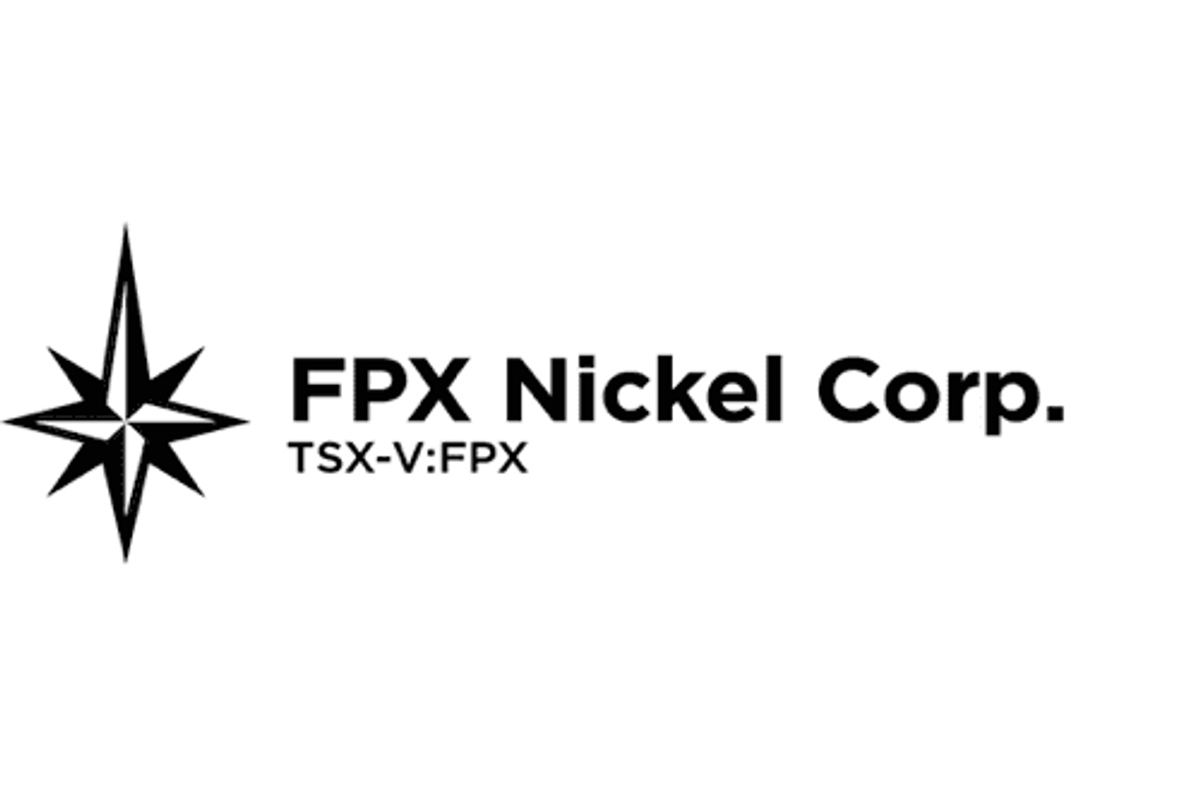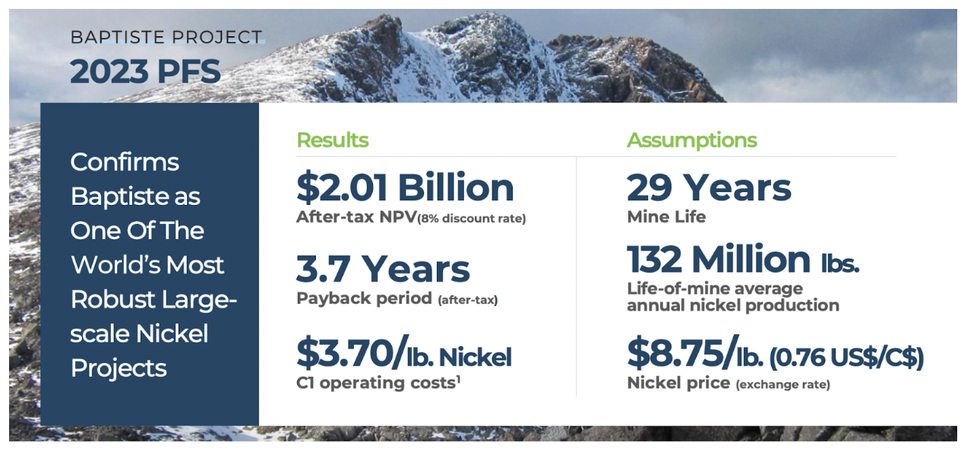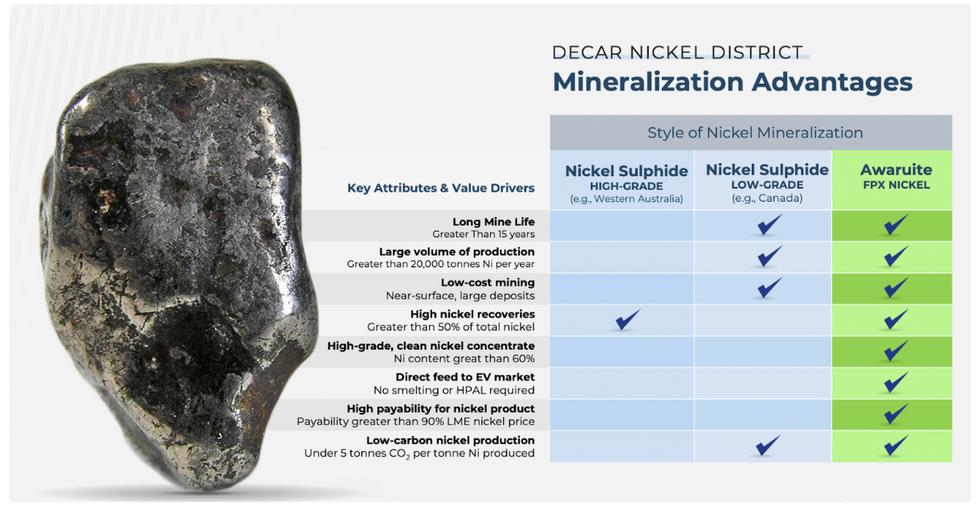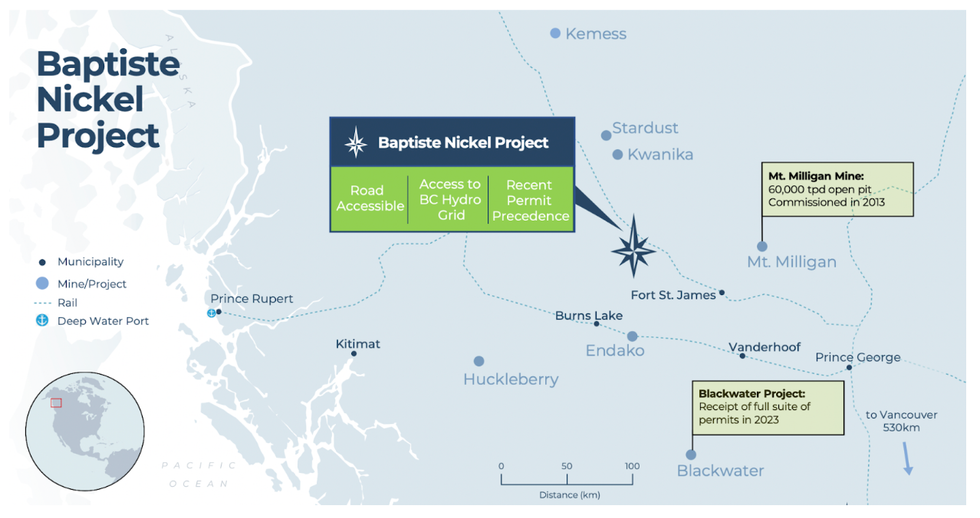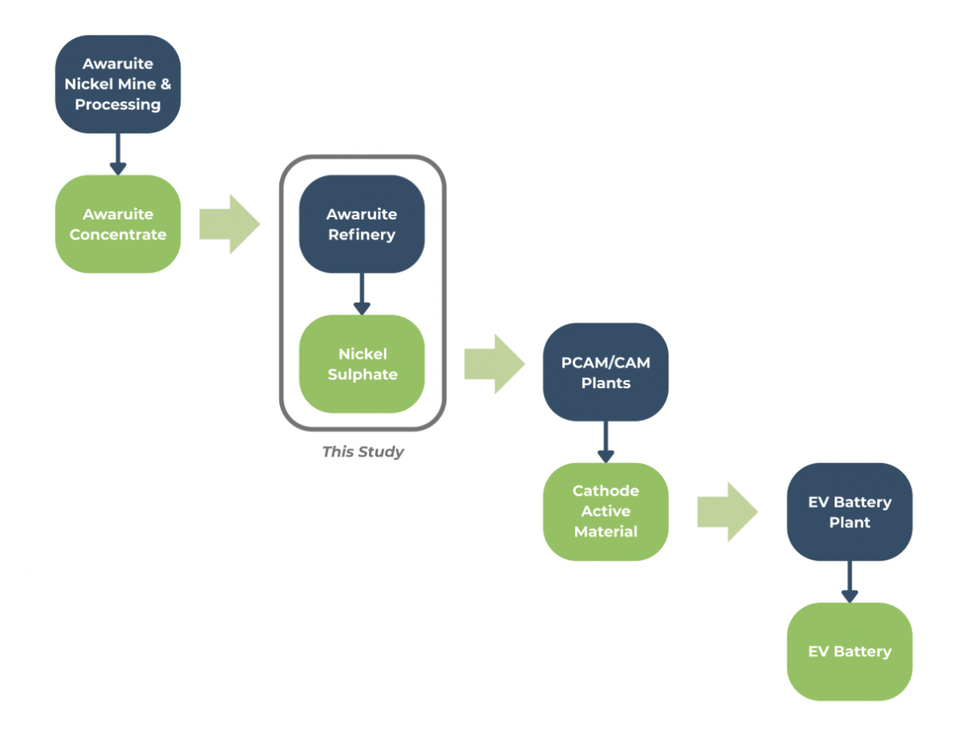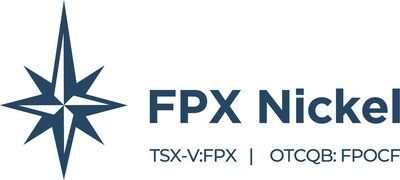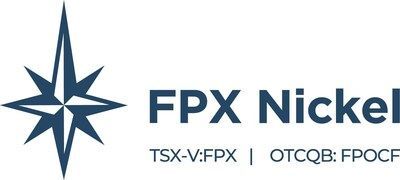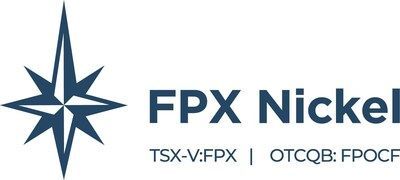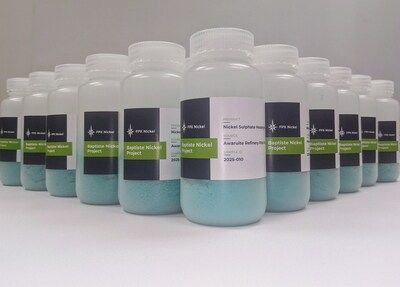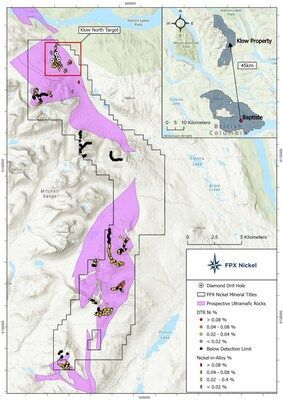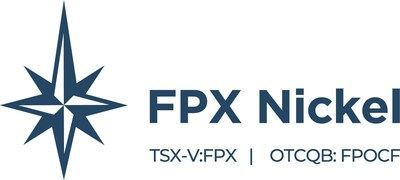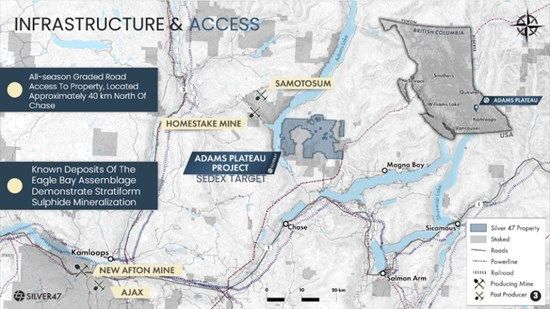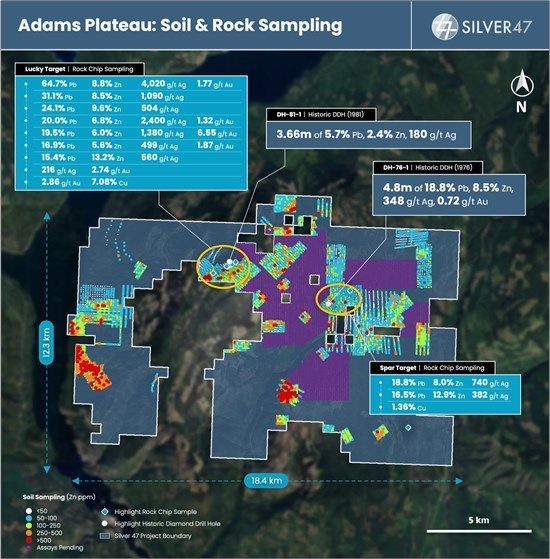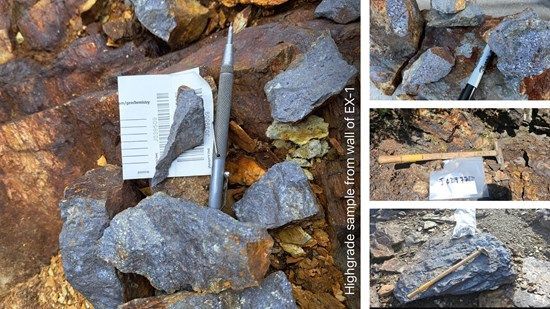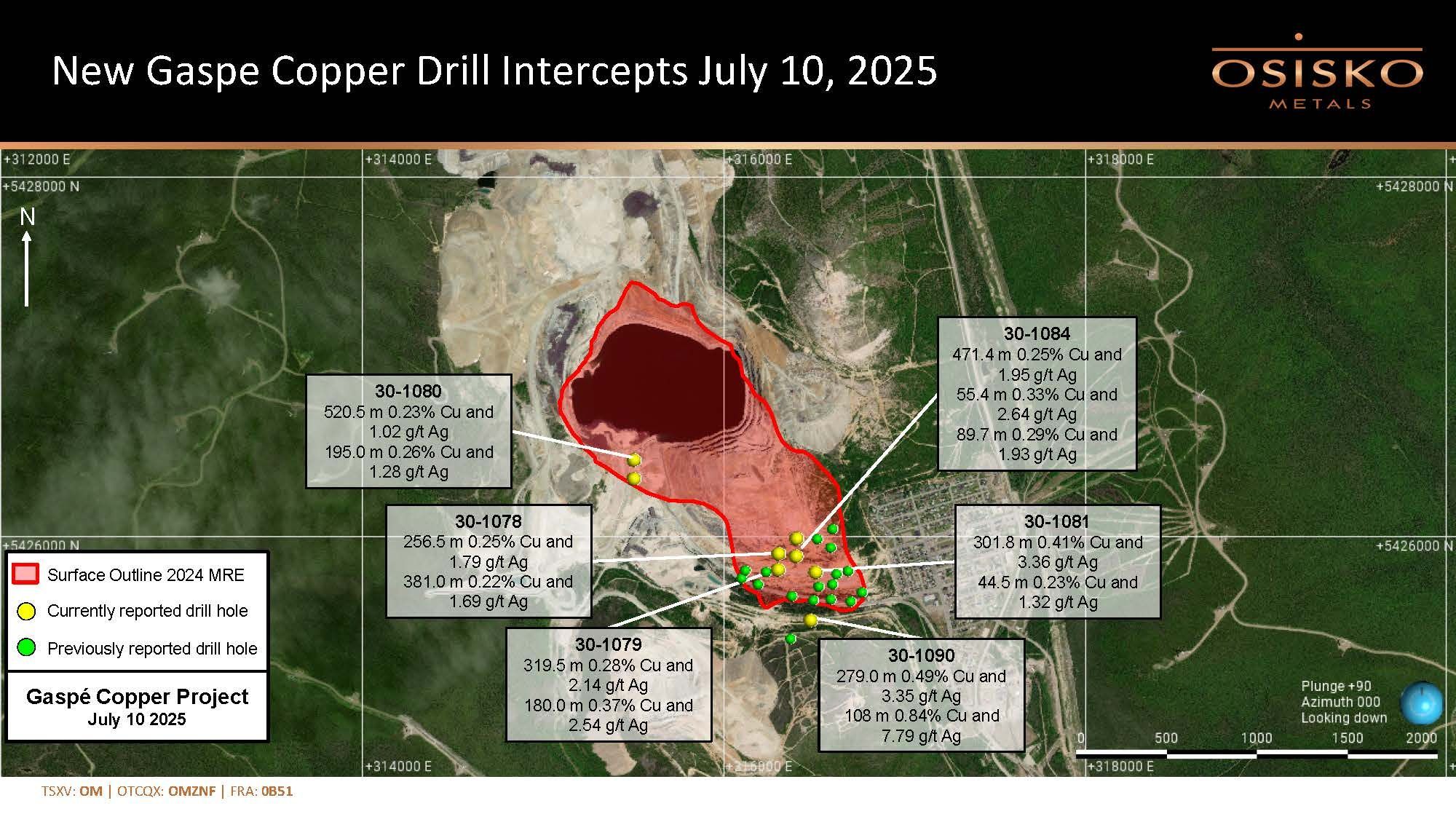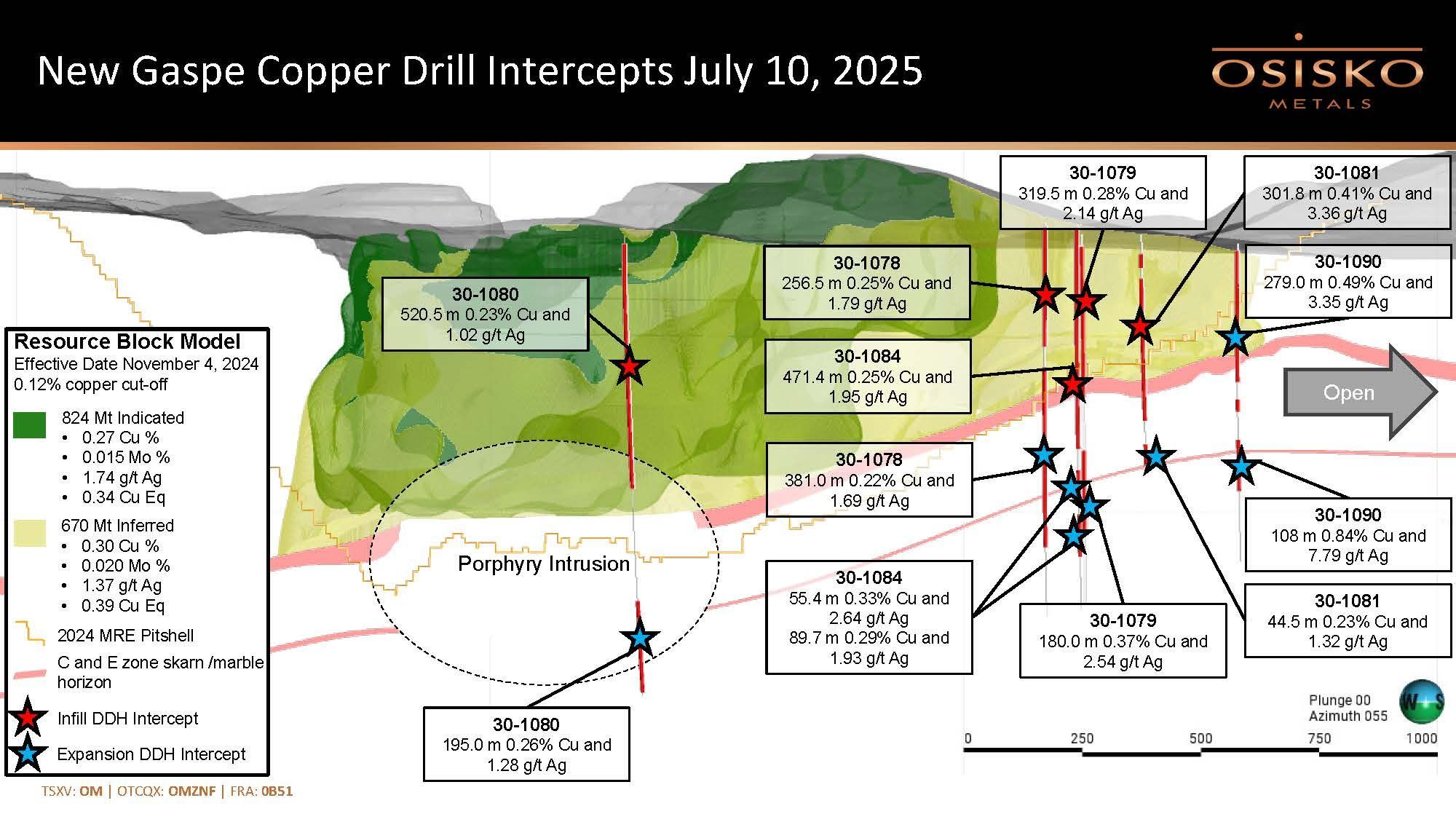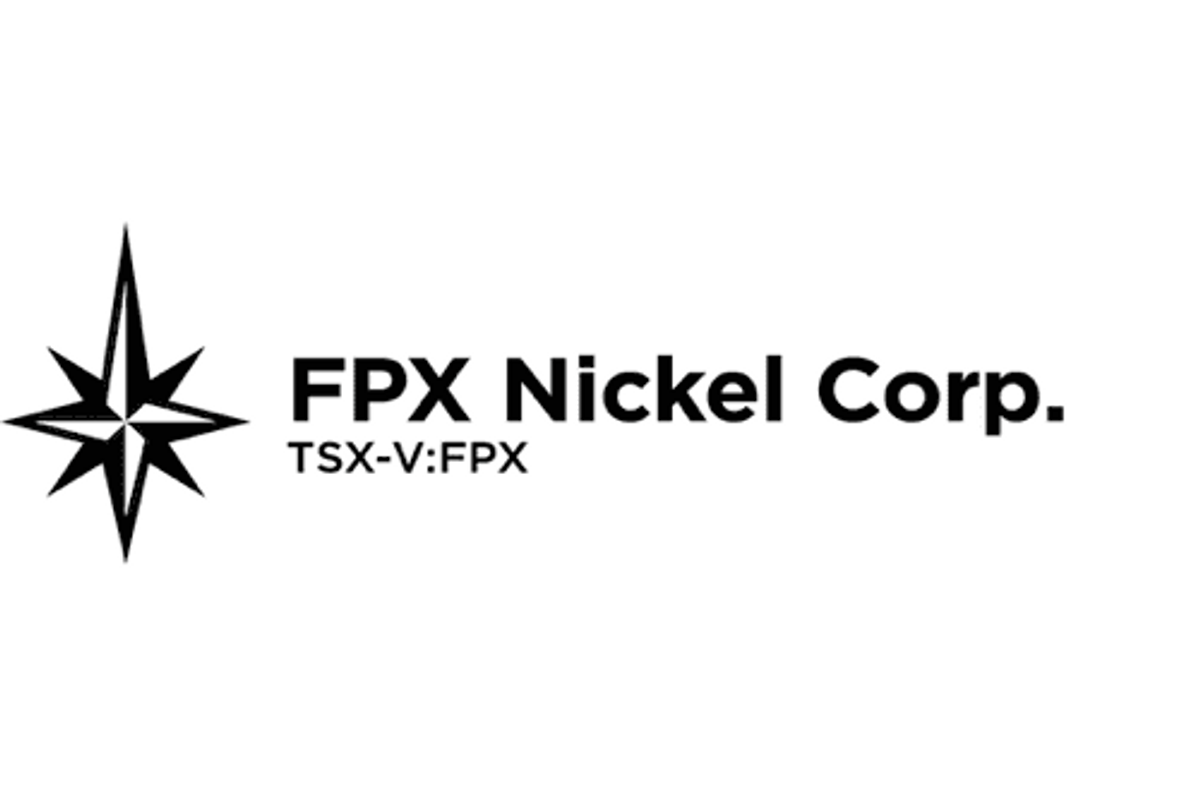
FPX Nickel Corp. (TSXV: FPX) (OTCQB: FPOCF) (" FPX " or the " Company ") is pleased to provide an update on key findings from a series of engineering trade-off studies (" TOS ") which have tangibly de-risked and improved the value of the Baptiste Nickel Project (the " Project "). These TOS focused on those project elements which have the strongest influence on overall Project value, with common objectives of optimizing Project economics, reducing the risk profile and better defining optionality ahead of the next study phase.
Highlights
- A comminution circuit utilizing semi-autogenous grinding (" SAG ") tangibly improves project value and provides an improved execution basis versus the previously considered high-pressure grinding rolls (" HPGR ") approach
- There is significant value in a phased construction approach, including an initial operating phase of 4-7 years at 100,000 tonnes per day (" tpd ") followed by an expansion to 150,000 tpd for the remainder of the 30-plus year mine life, versus the previously considered single-build 120,000 tpd approach
- Multiple tailings storage locations have been identified as technically feasible, including conventional facility configurations with reduced sand requirements for dam construction, thereby enabling finer primary grinding to increase nickel recovery
- An improved understanding of options for routing of the site access road and off-site power system, better defining the economics of those linear facilities
"The completion of these trade-off studies marks a significant milestone for FPX, demonstrating our commitment to a methodical, risk-based approach to project development," noted Martin Turenne , the Company's President and CEO. "These findings have yielded a more robust project model, one which will contribute to lower development risk and improved project economics in the next stage of study."
Background
Following on the September 2020 release of the Baptiste Nickel Project Preliminary Economic Assessment (the " PEA "), the Company has been focused on both optimization and de-risking efforts ahead of the next study stage. Results from the Company's 2021 field and metallurgical testwork programs were fed into a series of value-based TOS conducted from the fourth quarter of 2021 through to the second quarter of 2022. The TOS were conducted with assistance from several of the Company's key service providers, including:
- Ausenco Engineering Canada Ltd. – process facilities and on-site infrastructure
- Moose Mountain Technical Services – mine design and engineering
- Knight Piesold Ltd. – tailings and water management
- Onsite Engineering Ltd. – site access road upgrades and alignment
- Carisbrooke Ltd. – off-site power system options and alignment
While TOS results will be further refined at the commencement of the next formal Project study, the early addressing of optionality will allow the next study phase to be more efficient, focusing on robust project definition rather than optionality. In addition to improving Project value, the TOS findings provide a more mature technical and economic basis as the Company advances towards progressive engagement, consultation, and accommodation activities, thereby supporting more meaningful discussions and more informed decisions in defining the Project scope.
Comminution – Crushing and Grinding Circuits
The Company's comminution trade-off study looked at defining the best value crushing and grinding technology for the Project, with the PEA's HPGR flowsheet as a base case. Key criteria for this TOS were extracted from 2021 grindability and pilot-scale HPGR testwork (summarized in the Company's news release dated December 8, 2021 ) and augmented by benchmarking of other ultramafic deposits worldwide.
Initial screening of suitable technologies and configurations shortlisted conventional flowsheets utilizing either HPGR or SAG technologies. Further evaluations supported a holistic, value-based decision basis considering capital cost, operating costs, constructability, operability, maintainability, execution schedule, project footprint, and emissions.
Following evaluation, a SAG-based comminution circuit was definitively identified as best value, with contributing factors including:
- Capital Cost – typical savings associated with SAG-based circuits versus HPGR (20-30%) are amplified due to Baptiste's site conditions, topography, and mineralization characteristics
- Operating Costs – typical savings associated with HPGR-based circuits (20-25%) are muted due to the low-cost of low-carbon power in British Columbia and the Baptiste deposit's low abrasiveness
- Constructability, Operability, Maintainability, Footprint, and Emissions – all favour a SAG-based circuit over an HPGR approach
Comminution TOS findings were validated through additional grindability testwork and an independent subject matter expert (" SME ") review of all testwork, flowsheet selection, and equipment sizing, with results confirming the TOS basis and recommendation.
Project Scale and Phasing
This trade-off study looked at challenging the PEA's single-build 120,000 tonne per day concentrator throughput scenario. This evaluation considered project scales ranging from 60,000 to 150,000 tpd as part of both single-build and phased construction approaches. Key differentiators in the TOS include reducing the initial project build burden, maximizing the mine's higher-grade profile during payback years, initial build versus expansion funding scenarios (financing versus free cash flow), and improved metallurgical flexibility during the initial operating years due to new grind size opportunities identified in the tailings trade-off study basis (see below).
Tangible value was identified in a phased construction approach, including an initial operating phase of 4-7 years at approximately 100,000 tpd, followed by an expansion to approximately 150,000 tpd. This initial throughput level reduces the initial capital burden and build intensity, with the expansion to 150,000 tpd resulting in a similar volume of total nickel produced as the single-build 120,000 tpd approach, but over a shorter total mine life.
This improved approach to project throughput and construction favourably impacts the Project's initial capital burden, better utilizes the mine grade profile, funds the expansion from free cash flow at the end of the PEA's identified payback period, and accelerates the overall resource extraction basis, all contributing to increased Project value.
Tailings Facility Location and Management Strategy
The tailings trade-off study looked at available tailings deposition locations and technologies, with the PEA tailings storage facility location and dam construction methodology as a base case. A preliminary tailings alternatives assessment looked for potential storage locations on a regional scale, with all viable technologies (including management of filtered tailings) and locations then shortlisted for further technical evaluation.
Further evaluation indicated that there are multiple conventional and technically viable options for tailings management, as well as hybrids thereof. Notably, options were identified which reduce the requirement for the coarse primary grind as presented in the PEA, thereby providing the Project with the opportunity to increase nickel recovery, which is particularly beneficial during the higher-grade initial operating years.
Learnings on the associated technical, environmental, social, and economic risks and opportunities of each option will be important inputs to the Company's planned multi-criteria analysis resulting in identification of a technically, environmentally and socially preferred strategy for tailings management. This process will include review and input from multi-disciplinary independent technical experts and Project partners and stakeholders.
Primary Grind Size
This trade-off study looked at an improved understanding of the impact of primary grind size on Project economics. A relatively coarse primary grind of 300 µm was considered in the PEA so that sufficient sand quantities would be available to support construction of the PEA tailings storage facility, which included a sand dam. The associated limiting impact on metallurgical recovery due to this coarse primary grind was clearly identified and included in the PEA financial model.
With the identification of multiple tailings locations and construction strategies which can utilize finer primary grinds, there is an opportunity to improve nickel recovery and overall Project economics. This TOS defined the opportunity associated with finer primary grind sizes and the results will seed upcoming evaluations as the Project configuration is further refined.
Linear Facilities – Site Access Road and Off-Site Power System
These studies looked at potential concepts and alignments for key linear facilities, including the site access road and off-site power system. The Access Road TOS confirmed the PEA's site access road upgrade approach, with the majority of the existing road network alignment confirmed as suitable for Project requirements. The Off-Site Power System TOS identified multiple technically feasible connection options to the British Columbia hydroelectric grid, including the associated impact of each on the Project basis. Results from both TOS will support the Company's planned engagement, consultation, and accommodation activities prior to the selection of final design concepts.
Andrew Osterloh , P. Eng., FPX Nickel's Qualified Person under NI 43-101, has reviewed and approved the technical content of this news release.
About the Decar Nickel District
The Company's Decar Nickel District claims cover 245 km 2 of the Mount Sidney Williams ultramafic/ophiolite complex, 90 km northwest of Fort St. James in central British Columbia . The district is a two-hour drive from Fort St. James on a high-speed logging road.
Decar hosts a greenfield discovery of nickel mineralization in the form of a naturally occurring nickel-iron alloy called awaruite (Ni 3 Fe), which is amenable to bulk-tonnage, open-pit mining. Awaruite mineralization has been identified in four target areas within this ophiolite complex, being the Baptiste Deposit, and the B, Sid and Van targets, as confirmed by drilling, petrographic examination, electron probe analyses and outcrop sampling on all four targets. Since 2010, approximately US $28 million has been spent on the exploration and development of Decar.
Of the four targets in the Decar Nickel District, the Baptiste Deposit, which was initially the most accessible and had the biggest known surface footprint, has been the focus of diamond drilling since 2010, with a total of 99 holes and 33,700 m of drilling completed. The Sid target was tested with two holes in 2010 and the B target had a single hole drilled in 2011; all three holes intersected nickel-iron alloy mineralization over wide intervals with DTR nickel grades comparable to the Baptiste Deposit. The Van target was not drill-tested at that time as bedrock exposures in the area were very poor prior to more recent logging activity. In 2021, the Company executed a maiden drilling program at Van, which has returned promising results comparable with the strongest results at Baptiste.
About FPX Nickel Corp.
FPX Nickel Corp. is focused on the exploration and development of the Decar Nickel District, located in central British Columbia , and other occurrences of the same unique style of naturally occurring nickel-iron alloy mineralization known as awaruite. For more information, please view the Company's website at www.fpxnickel.com or contact Martin Turenne , President and CEO, at (604) 681-8600 or ceo@fpxnickel.com .
On behalf of FPX Nickel Corp.
"Martin Turenne"
Martin Turenne , President, CEO and Director
Forward-Looking Statements
Certain of the statements made and information contained herein is considered "forward-looking information" within the meaning of applicable Canadian securities laws. These statements address future events and conditions and so involve inherent risks and uncertainties, as disclosed in the Company's periodic filings with Canadian securities regulators. Actual results could differ from those currently projected. The Company does not assume the obligation to update any forward-looking statement.
Neither the TSX Venture Exchange nor its Regulation Services Provider accepts responsibility for the adequacy or accuracy of this release.
SOURCE FPX Nickel Corp.

![]() View original content to download multimedia: https://www.newswire.ca/en/releases/archive/June2022/09/c0339.html
View original content to download multimedia: https://www.newswire.ca/en/releases/archive/June2022/09/c0339.html


